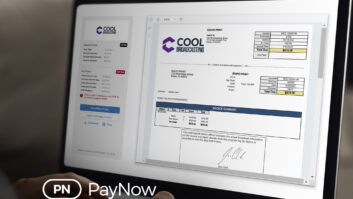Web Watch is a roundup of all things radio and the Web. Send your news and tips to Internet Radio editor Laura Dely at [email protected]
The America Online-Time Warner merger marks a major turn in the evolution of the Internet into a broadcast medium.
Basically, it confirms the thesis offered by Massachusetts Institute of Technology comparative media studies Professor Henry Jenkins that appeared in these pages some three years ago.
Jenkins argued that the evolution of early radio – which began as a point-to-point form of communication, but transformed to the point-to-multipoint form we know today – parallels what would happen with the Internet.
Three years ago, that appeared utterly absurd. The core architecture of the Internet seems resistant to broadcasting and is better suited to pointcasting.
Even on the Web, egalitarianism seems to rule. One Web site is pretty much on the same ground as the next. Suddenly, obscure online publications like the Drudge Report managed to scoop national news organizations. Lucky little guys who happened to sign up for URL names like Altavista.com walked away with millions as moguls moved in to stake out the prime real estate to get whatever edge was possible.
Crash
Other issues cropped up with streaming media. In fact, the recent failure of so many dot-com ventures seems to show this to be a misuse of the medium. Unlike radio, scaling audiences online means increasing costs. Each listener gets an individual stream and the cost for providing that grows quickly.
BroadcastAmerica finally collapsed under a mountain of bills for such services. The only real hope of overcoming this is by taking advantage of the Internet’s one-on-one approach through ad insertion. Time will tell as to whether revenues from this will defray the costs.
So the Internet’s idiosyncratic qualities makes it best suited for e-mail and other point-to-point propositions. Broadcasters have had the greatest success supporting traditional fare with Web-based promotions, chat rooms for listeners and the like – at least for now.
And then you have AOL-Time Warner. This marks an enormous move toward centralization in what had been a decentralized medium. While the Internet is international and unwieldy, gated communities like AOL are able to focus and direct members to its pick of the Web. Add Time Warner to the mix and there’s no need ever to extend beyond the world as defined by this conglomerate.
Aggregator
What the merger creates isn’t quite the same thing as broadcasting. Still, it serves to aggregate large audiences – and with it, the bulk of advertising dollars. Broadcasters face a tough battle competing against this new Goliath. As broadband becomes widely adopted, AOL may have a chokehold greater than that of the three TV networks in the 1960s and ’70s. So, as Jenkins observed, media history repeats itself.
The AOL-Time Warner deal also marks an interesting end to the BillKennard era at the FCC. His advocacy for LPFM seemed somewhat out of step in a time when micro-broadcasters might do better by going online. Though Kennard managed to attach several conditions to the AOL deal, it seems likely that the media giant will aim to squeeze out smaller voices.
Given the ambitious earnings estimates, AOL is going to have to go all-out to satisfy investors. Don’t be surprised if what’s coming online mirrors the way the NAB squelched LPFM. Having Michael Powell at the FCC helm will only accelerate the process.
During the AOL discussions, Powell didn’t seem to think that any caveats were necessary. Expect a free-for-all ahead – “free” at least for those able to foot the cost of lobbying.
Quickly
AOL wasted no time in getting set to capitalize on the merger.
Kevin Conroy, a former top exec at BMG Entertainment, has taken over AOL’s digital music strategy to leverage the all-important synergy now possible.
“The online medium has the potential to transform the music industry as dramatically as the phonograph, radio or the compact disc,” said Conroy.
“Only AOL-Time Warner has all of the pieces needed to lead this industry to the next level – tens of millions of subscribers and users, an incredible library of great albums and songs, an industry-leading technological infrastructure and some of the world’s best-known recording artists,” he said.
And, as noted here earlier (RW, Jan. 3), broadcasters are going to have a hard time competing against the online arms of record companies if saddled with paying onerous music licensing fees to these same companies.
Dot-com demise
Meanwhile, the shakeout continues in the online world. The latest seem like mere aftershocks following the total collapse of BroadcastAmerica and GlobalMedia’s departure from the streaming radio biz. Audiohighway.com has also joined the parade of busted dot-coms after filing for Chapter 11 in January.
Others seem ready to weather the storm. eYada.com, the Internet-only talk radio streamer, is cutting back on the 28 shows in their lineup. According to eYada CEO Bob Meyrowitz, this trims the fat.
“After a thorough review of our lineup, we have decided to strengthen our schedule by focusing on 13 of our most popular programs, which together account for about 85 percent of our total audience,” Meyrowitz said.
Support and production staff for the 15 shows cut account for 30 positions. Aside from this, eYada appears to be building strength in the Arbitron Webcast Ratings.
“In the last month alone, we have increased our Aggregate Tuning Hours (ATH) from 88,000 to an impressive 112,000,” he said.
Despite the demise of the BroadcastAmerica, demand for streaming services for radio remains robust. Real Broadcast Networks has completed its all-digital Internet Broadcast Operations Center at its headquarters in Seattle.
Cox Interactive recently announced that it is forming a strategic alliance with StreamAudio. Under the agreement, StreamAudio will provide the audio streaming and revenue-sharing ad insertion services for all of Cox Radio’s 83 stations.
Gregg Lindahl, Cox Radio Interactive vice president, said the arrangement would go into effect in February, when their contract with Yahoo’s Broadcast.com expires. Lindahl has had the monumental task of bringing these properties online – as well as getting folks at the station level up to speed with the demands of multimedia production.
Already, WSB(AM) in Atlanta had the excitement of breaking the news of former President Clinton’s deal with the special prosecutor in their market.
“We launched the station Web site that day,” said Lindahl, “They had to turn over the site with the breaking news three times.”
Got it goin’ on
Last September at The NAB Radio Show, I was most impressed with the people at Interactive Pools. They seemed to be offering just the spice for morning shows with Web-based contests, pools and games. Now, NBG Radio Network will rep the service throughout the radio industry.
Dean Gavoni, executive vice president of NBG Radio Network, sees this as a strong addition to their current offering of radio shows that they either produce, syndicate or rep to more than 2,700 station in the United States.
“This is another step furthering our efforts to expand NBG’s offerings to radio stations,” he said.
The Madison Avenue crowd seems to be getting ready to deal with the deluge of advertisers expected to be flocking online when ad insertion catches on in the months ahead. Cybereps and Interep Interactive have merged, with Interep taking the 51-percent majority stake. The new company will operate under the Cybereps’ name.
Adam Guild, founder and president of Interep Interactive, will remain with the merged company as president, corporate and business development. Mike Warsinske, co-founder of Cybereps, will continue on as CEO.
Likewise, Mediapassage and OneMediaPlace have merged. This is a natural combination, according to Jerry Machovina, president and CEO of OneMediaPlace.
“The merger will provide an opportunity for us to leverage Mediapassage’s extensive print and broadcast relationships. By combining the OneMediaPlace front-end solution with the Mediapassage back-end systems, the new company will provide customers with a complete product,” he said. Machovina will continue on as the co-CEO of the newly formed OneMediaPassage.
According to Gil Scott Heron, the revolution will not be televised. However, the folks at PenguinRadio might give some glimpse of the action. During the inaugural inanities, the Washington-based Webcaster streamed the D.C. Police Department’s radio signals.
As it turned out, the action was somewhat subdued. While the protests were the most intense since the Vietnam Era, peace prevailed, unlike the fracas during the notorious “Battle of Seattle” last year.
PenguinRadio President Andrew Leyden described this as a “great opportunity for law enforcement officials from all over the country to listen in and learn from the tactics employed by the D.C. Police.”
Of course, this could be a learning experience for those on the other side of the barricades as well. Wherever you are on the political spectrum, it’s sad to think that such intriguing offerings may be lost as things like the AOL juggernaut go forward.
RW welcomes other points of view







